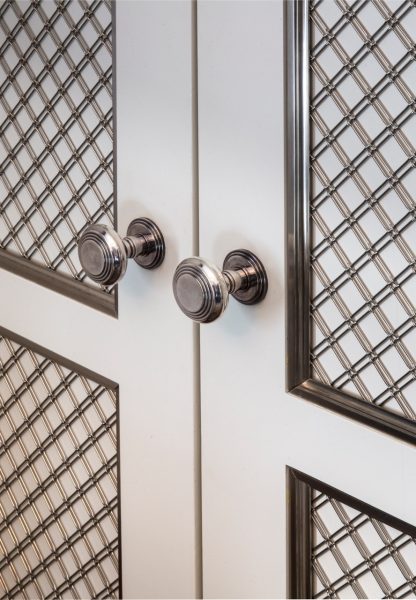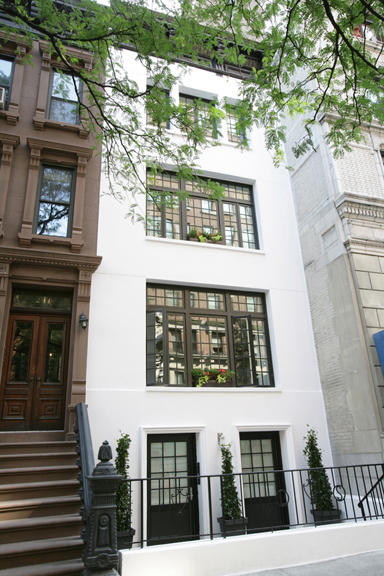
INTERVIEW: Door Hardware with New York Architect Paul Gleicher
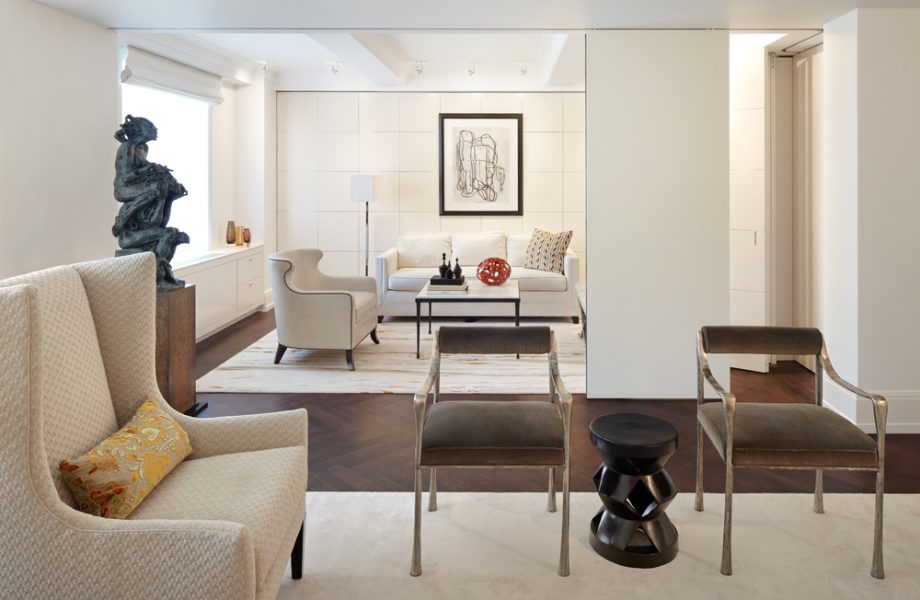
Roomhints interviewed New York Architect Paul Gleicher to understand the best practices for picking the right door hardware for your space.
Step 1: Decide whether you want a lever or a knob?
Narrow your selection down to a lever handle or a knob.
Paul: “Stylistically, for a Dallas apartment project, we chose a simple knob since it is a modern minimalist apartment. We went with polished nickel cause nickel is a bit warmer in color than polished chrome.”
Step 2: Mortise lock vs. Tubular lock?
The next component in door hardware, is picking the type of lock. There are two main types; a mortise type lock and a tubular type lock.
Paul: “The mortise type lock is more substantial and offers a feeling of weight and comfort. In addition, there is a sleek, minimal look to them. I always encourage our clients to use the mortise type lock. It is more expensive but lasts longer.”
Step 3: Left hand or right hand door hardware
One way to determine if it should be a left hand or a right hand door knob, stand with the door open and your back against the hinge jamb. If your left hand is nearest to the doorknob, then the door is left-handed. If you right hand is nearest to the doorknob, then it is right handed.
Step 4: Privacy or Passage Hardware?
Privacy hardware as can be deduced by the name, means it has the option to lock. This type of hardware is recommended for bathrooms and bedrooms.
Passage hardware is good for closets and regular rooms that do not need a lock
“Door Hardware is really the jewelry of the apartment. It’s a piece of the space that you are constantly touching and feeling. It has to feel good and not only look good.
Concealed Edge Pull:

A concealed edge pull is a type of door handle where you push the top of the handle and the entire edge pull swings out enabling you to be able to open the door.
Paul: “We chose this type of door hardware for this room because the idea for this room was to have all the sliding panels act as a room divider. This way we could separate the large room into two rooms. When separated, the remainder of the living room would become the guest bedroom. We loved the minimal edge pull hardware because it creates the visual of having all walls disappear and not look like a room divider.”
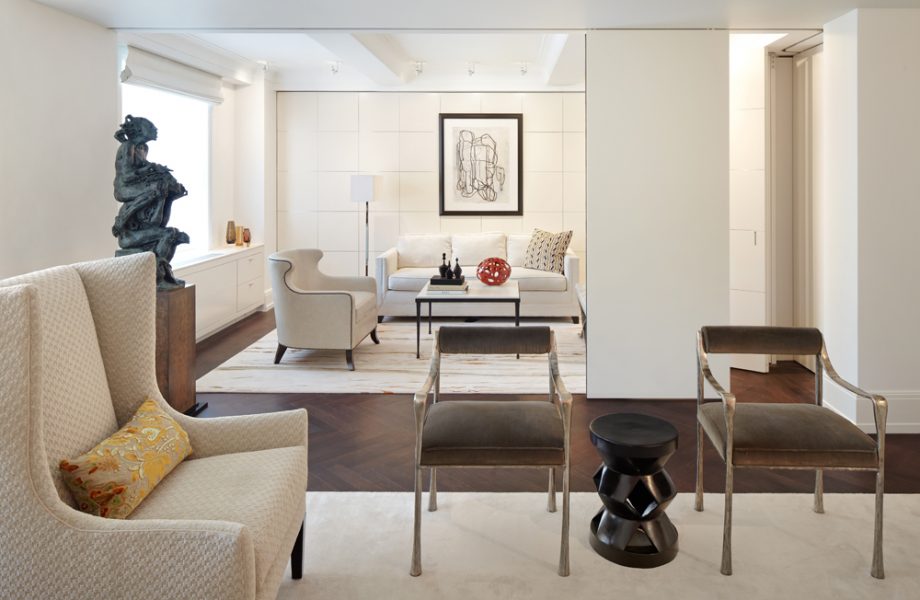
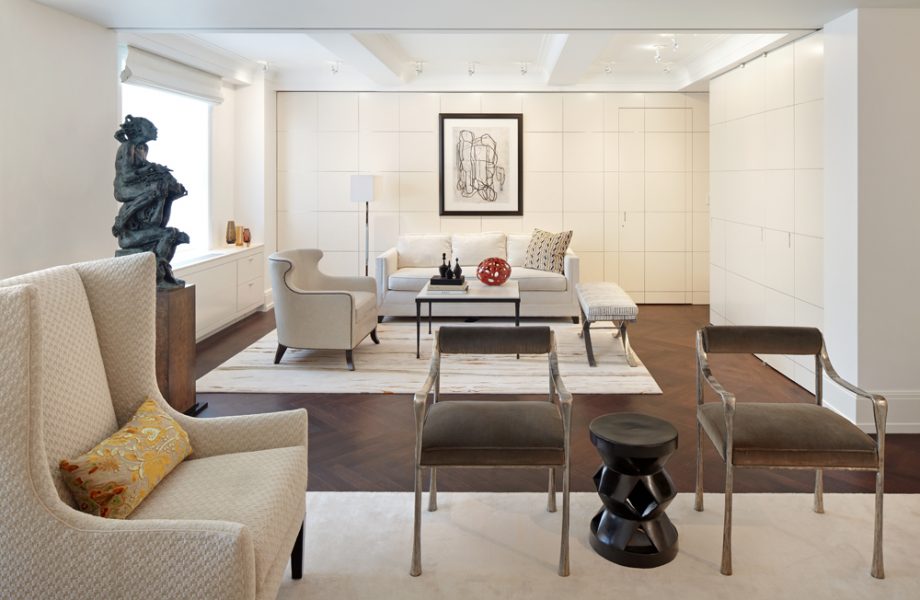
Paul: “The concealed edge pull when placed right in with the seam and the pivot hinge are the most minimal type of hinge you can have, an alternative solution is to use, a soss hinge. A soss hinge is totally hidden. The soss hinge is used a lot in cabinetry so that you don’t see the hinge. For this same project, we used a soss hinge for the door that leads into this room.”
Tell us about a project where the door hardware really stands out!
Paul: “For one of our projects, we used sterling silver door knobs. The hardware was absolutely stunning and the client loved the work of polishing the hardware every so often.”
What is one trend you no longer see for door hardware?
Paul: “Brass really fell out of favor. Sometimes I see my clients liking satin brass or polished, but my clientele favors the “white metals” of nickel or chrome instead of the “yellow” metal of brass.
How do you present hardware options to your clients?
Paul: “I really enjoy going with the client to a door hardware showroom, such as, Nanz showroom. It’s like going to the jewelry store. All the knobs are in glass display cases and it enhances the whole shopping experience. We always pre-select the knobs we are interested in prior to our client’s visit, as the showroom can be very overwhelming. At the showroom, we can guide them through the selections.”
What do you convey to each client when deciding upon the hardware for the project?
Paul: “It’s not just about the door hardware. The door hardware needs to relate to all the other elements in the project as well. For example, we might have an Art Deco theme and the doorknob would be Art Deco and the fireplace will have fluting on it. All the elements fit perfectly together.”
Picking Doors for a Project:
Pocket Doors:
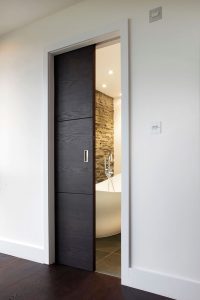
Paul: “I use pocket doors a lot for projects. ProHint: it is important that a pocket door is a solid core wood door vs, a hollow core wood door.”
Sliding Doors:

Paul: “For sliding doors that stack outside of the wall, such as, the popular barn sliding doors, the hardware that the door slides on is visible. Since it is visible, the hardware becomes a design element. I love bronze or blackened steel hardware for this application. Check out Hafele. They are a great supplier of door hardware.”
Tell us a bit about your background.
Paul: “I have always been interested in design. Growing up my father was a tool designer and my uncle designed cars for the Ford Motor Company. I received a BA in Anthropology with a minor in Archaeology. After graduating I went on a couple of digs and started using a sexton, a tool that gauges the landscape, and really loved the work.”
Why did you start an architecture firm?
Paul: “With my love of science, mathematics and art – architecture and interior design really encompasses all these disciplines. I received my architecture degree from Columbia University and opened my firm in 1989.”
Why do you prefer residential design over commercial design?
Paul: “The firm does both commercial and residential projects. Personally I love residential projects more than commercial. There is a greater connection with the client and a great sense of creating joy for the client within their home. We really want to collaborate with our client and understand our client. What their sensibilities are and match them to the design to the rest of the project. At the conclusion of a project we celebrate with a wonderful dinner at the client’s new home. For a commercial space essentially you could design 1 office and multiple it by 30. But it is not as satisfying. At the end of the job the client moves in and says thank you but it is much less personal.”
What does a typical project for you look like?
We work on projects that range from $500,000 – $3.5 M. Apartments or homes that are anywhere from 1000 SF – 6000 SF. We do work all over the country but mainly in Manhattan, Brooklyn and Upstate New York. Right now we are working in Westchester, Dutchess Columbia counties, as well as, on a 5000 SF apartment in Dallas, Texas.
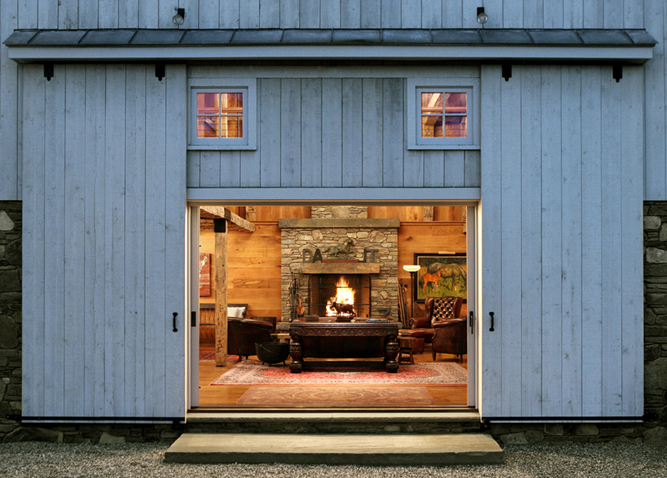
Another project I am working on is this fantastic new farmhouse in Columbia county, NY. It’s a 150 acre property and the clients are really into conservation and migratory birds. They want to have bee hives, butterfly gardens and foster cotton tail rabbits.
I am a Certified Passive house designer. Passive House is the world’s leading standard in energy efficient construction. Passive Houses require very little energy to achieve a comfortable temperature year round, making conventional heating and air conditioning systems obsolete. For this project we will be creating a passive house.
To learn more about Paul Gleicher you can visit www.gleicherdesign.com.
